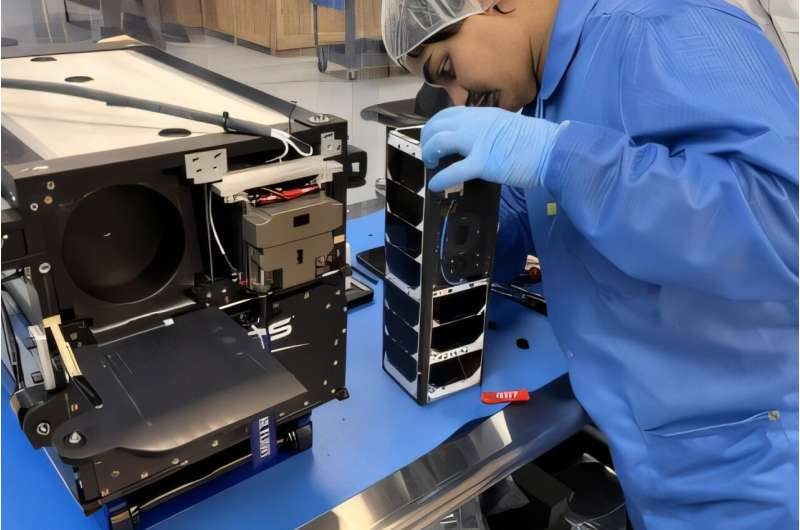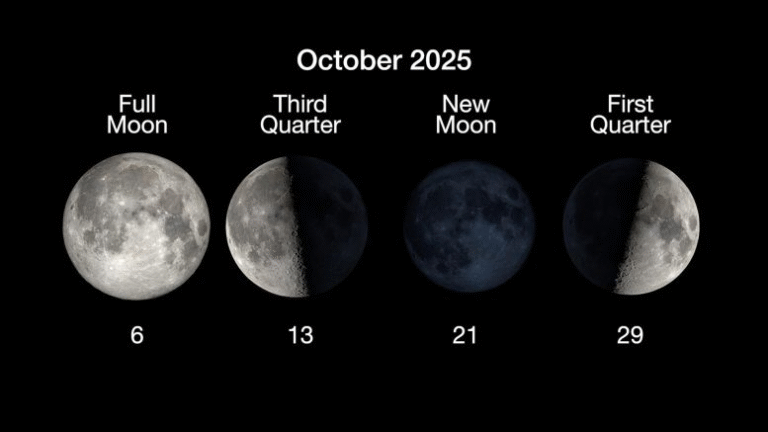Student-Built 3UCubed Satellite Heads for Orbit to Study Solar Wind and Space Weather

A team of undergraduate students from three U.S. universities has pulled off something genuinely impressive: they’ve designed, built, and prepared to launch their own CubeSat, a compact, loaf-of-bread-sized satellite named 3UCubed, created to study the solar wind, electron precipitation, and the way Earth’s thermosphere responds to space-weather conditions. This mission isn’t just a classroom project—it’s an official part of NASA’s Interstellar Mapping and Acceleration Probe (IMAP) collaboration and will launch on a SpaceX rocket from Vandenberg Space Force Base, no earlier than November 10, 2025 at 10:19 a.m. PST.
Built by students from the University of New Hampshire (UNH), Sonoma State University (SSU), and Howard University (HU), the 3UCubed project involved around 70 undergraduate students working over the span of five years. Their roles ranged from building physical hardware to writing flight software and even performing orbit analysis. The mission provides a rare hands-on opportunity for students to experience nearly every piece of the satellite development pipeline—from the earliest trade studies to the moment it’s switched on in orbit.
What 3UCubed Is Designed to Do
The 3U-class CubeSat (roughly 30×10×10 cm) will travel into Low Earth Orbit, specifically targeting the thermosphere, a region where many satellites and even the International Space Station operate. It will gather two main types of data:
- Atomic oxygen density, an important factor in satellite drag and orbital decay.
- Electron precipitation, which involves charged particles streaming from space into Earth’s upper atmosphere—especially active in the auroral and cusp regions near the poles.
These measurements will be combined with IMAP’s broader solar-wind observations to better understand how energy from the Sun interacts with Earth’s upper atmosphere. The goal is to improve future space weather forecasting, helping protect critical technology such as GPS, power grids, and communication networks from intense solar flare or geomagnetic storm events.
The mission is particularly relevant because solar weather is not just an abstract scientific concept—it affects everyday life. High solar activity can disrupt navigation systems, harm satellites, cause radio blackouts, and even threaten astronauts. With Solar Cycle 25 currently rising toward peak activity, the mission’s timing couldn’t be more ideal.
What Makes This CubeSat Stand Out
CubeSats have become a cornerstone of modern space research because they offer a cost-effective, customizable way to reach space. The 3UCubed satellite is no exception, and students were deeply involved in every system, including:
- Instrument software development
- Flight software programming
- Ground-station software
- Power, communications, and telemetry system decisions
- Mechanical assembly, wiring, and soldering
- Vendor selection and budget oversight
- Attitude control system specifications
The satellite houses two scientific instruments, both built, tested, and calibrated at UNH. Students from SSU created the ground-station software and will operate the primary ground station, which will receive mission data and send commands. HU and UNH collaborated on a backup ground station to ensure mission resilience.
Because this mission is a part of NASA’s CubeSat Launch Initiative, the satellite earned its spot on the SpaceX launch manifest after a competitive selection process. And although the satellite is student-built, it was held to the same engineering discipline and performance criteria as professional research missions.
How Students Grew Through the Project
Many students described the experience as transformative, giving them real engineering credibility before graduation. They learned to work alongside research engineers, aerospace professionals, and peers from multiple universities.
Students reported growing stronger in:
- Software engineering
- Hardware instrumentation
- Systems engineering
- Mission operations
- Team collaboration across states and disciplines
Several have already moved into careers in aerospace, instrumentation, and engineering fields. For example, one mechanical-engineering student helped create the initial CAD model and design specifications for the CubeSat’s attitude control subsystem, and now works as a configuration engineer in the aerospace industry. Another student from SSU now works at Keysight Technologies in an instrumentation-focused role after gaining ground-station and hardware experience from the project.
The mission also fostered meaningful community outreach. For example, students at SSU partnered with local amateur radio operators and Scout groups to build a community ground station, allowing younger learners to communicate with a real orbiting satellite once 3UCubed is operational.
Understanding the Thermosphere: Why This Region Matters
The thermosphere is an under-studied yet critically important region of Earth’s atmosphere. Located between roughly 90 km and 600 km above Earth’s surface, it behaves very differently from the lower layers of the atmosphere. The density is low, temperatures can climb to more than 2,000°C, and it’s where charged particles from solar activity can dramatically alter atmospheric behavior.
Studying this region helps scientists:
- Predict satellite drag, which affects orbit calculations
- Understand auroral physics
- Monitor energy transfer from the Sun to Earth’s atmosphere
- Improve space weather models
- Assess risks to satellites and ground-based technologies
Because 3UCubed will orbit in high-latitude regions—home to spectacular auroras—it provides a rare chance to observe how bursts of solar activity cause rapid atmospheric changes.
CubeSats and Their Growing Role in Space Exploration
Even beyond this mission, CubeSats have reshaped how space science is conducted. They’ve become essential tools for universities, startups, government labs, and commercial companies because they provide:
- Low-cost access to space
- Rapid development cycles
- Flexibility for scientific testing
- Opportunities for student training
- Platforms for technology demonstrations
Despite their small size, many CubeSats perform sophisticated tasks, such as imaging Earth, studying radiation, observing climate patterns, and testing propulsion systems. NASA and other agencies increasingly rely on CubeSats for missions where large satellites are unnecessary or too expensive.
The 3UCubed mission fits right into this expanding ecosystem—offering solid scientific value while simultaneously serving as a training ground for the next generation of space engineers and researchers.
Looking Ahead to Launch and Operations
With the satellite fully assembled and tested, the student teams and NASA partners are preparing for launch and early-orbit operations. Once deployed into orbit, the satellite will begin sending back data that students will analyze alongside IMAP measurements.
The mission is expected to run for approximately two years, giving students ample opportunity to manage real spacecraft operations, analyze scientific data, and contribute to peer-reviewed research.
As the countdown to November 2025 approaches, the excitement is well-deserved. It’s not every day that undergraduate students get to build a satellite that goes to space—and even rarer that their work contributes to major NASA research programs.
Research Reference:
https://arxiv.org/abs/2211.15781





